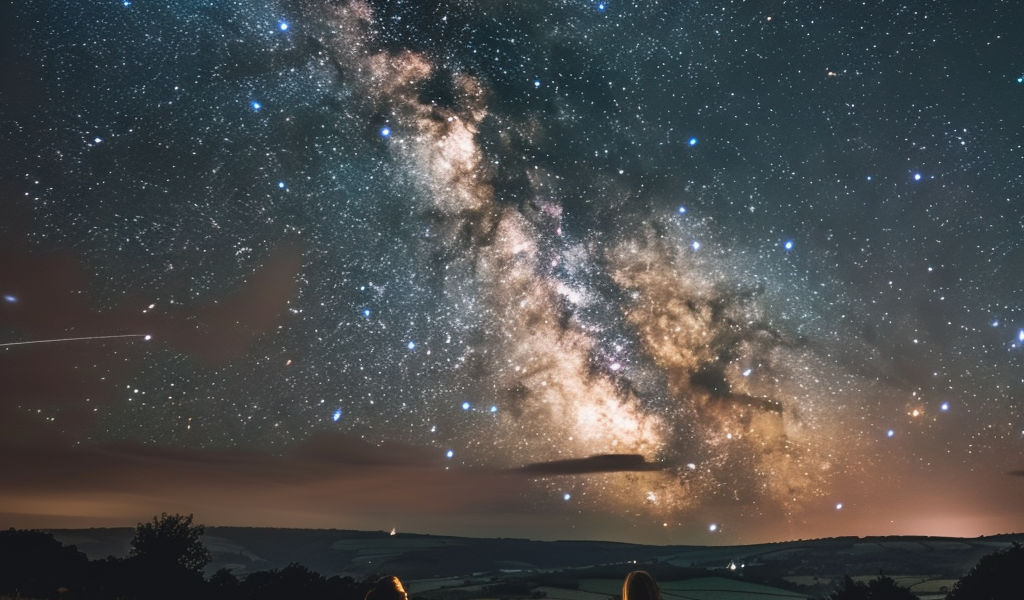As we venture into 2024, stargazers in Oklahoma and beyond are in for a treat with a plethora of celestial events set to grace the night sky throughout the year. From meteor showers to impressive lunar phases, these occurrences will be easily visible to the naked eye, offering a fantastic opportunity for both amateur and seasoned astronomers.
Throughout 2024, residents will witness a series of full moons, new moons, and meteor showers that promise to illuminate the night sky. Among these phenomena are super moons and micro moons. A super moon occurs when the moon is at its closest point to Earth, known as perigee, while a micro moon happens when the moon is at its farthest point, or apogee, in its orbit.
One of the standout events will be the passing of comet Tsuchinshan-ATLAS in October, which is expected to be a remarkable sight for those looking up at the heavens.
Celestial Events to Look Forward to in 2024
July Highlights
From July 18 to August 21, skywatchers can catch the Southern Delta Aquariids Meteor Shower along with the Alpha Capricornids. Although the Delta Aquariids are best observed in the Southern Hemisphere, they are still visible in other regions, particularly before the new moon rises. Mark your calendars for July 21, when the Full Buck Moon will illuminate the night.
Additionally, from July 23 to November 19, Neptune will shine brightly, providing an excellent opportunity for planet gazers to spot this distant planet.
August’s Perseid Meteor Shower
August will be particularly exciting for stargazers as the Perseid Meteor Shower peaks during this month. Observers should look towards the Perseus constellation in the pre-dawn hours for a spectacular display of meteors streaking across the sky. This annual event is one of the most anticipated meteor showers and does not require a telescope for viewing.
Monthly Celestial Calendar for Oklahoma in 2024
August
- August 4 – New Moon
- August 19 – Full Blue Moon
- August 25 to October 1 – Saturn at its brightest in the evening sky
September
- September 2 – New Moon
- September 17 to September 18 – Partial Lunar Eclipse
- September 17 – Full Corn Moon
- September 23 to December 8 – Southern Taurids Meteor Shower
- September 26 to November 22 – Orionids Meteor Shower
October
- October 2 – Annual Solar Eclipse
- October 2 – Micro New Moon
- October 5 to December 31 – Venus at its brightest in the evening sky
- October 12 – Comet Tsuchinshan-ATLAS makes closest pass to Earth
- October 13 to December 2 – Northern Taurids Meteor Shower
- October 15 to December 21 – Uranus at its brightest in the evening sky
- October 17 – Super Full Hunter’s Moon
November
- November 1 – New Moon
- November 3 to December 2 – Leonids Meteor Shower
- November 14 to December 28 – Jupiter at its brightest
- November 15 – Full Beaver Moon
- November 19 to December 24 – Geminids Meteor Shower
December
- December 13 to December 24 – Ursids Meteor Shower
- December 15 – Full Cold Moon
- December 18 to December 31 – Mercury at its brightest in the morning sky
- December 30 – New Moon
- December 31 – Mars at its brightest in the night sky
Optimal Viewing Locations
For those eager to witness these celestial events, choosing the right location is crucial. NASA recommends finding areas away from urban light pollution, which can obscure the visibility of stars and other celestial bodies. Ideal spots include large fields, valleys, hiking trails, and camping sites, where the sky remains clear and unobstructed.
As you prepare for a year filled with cosmic wonders, ensure you have the right gear, such as a blanket or reclining chair, to enjoy the view comfortably. Bring along snacks and drinks to enhance your stargazing experience.
With so many celestial events lined up for 2024, make sure to take the time to look up and appreciate the beauty of the universe. Whether you are an experienced astronomer or a casual observer, there is something magical about connecting with the night sky.





